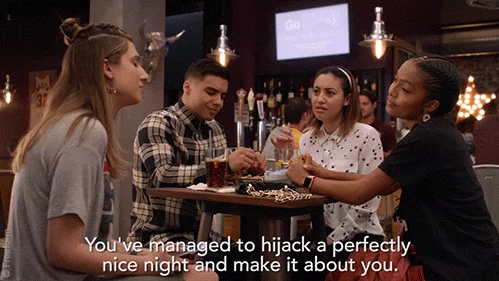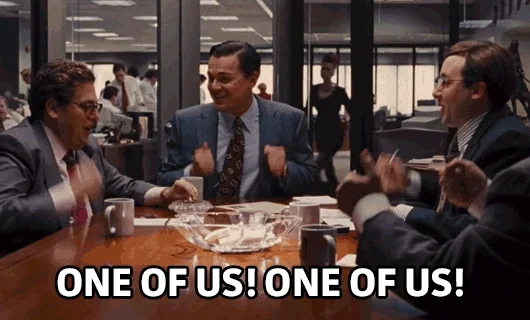Hey @allklier,
Did you jump the Mistika ship? Just curious. Cheers!
Jef
Hey @allklier,
Did you jump the Mistika ship? Just curious. Cheers!
Jef
Yes, I’d love to hear more about Mistika in terms of comparisons. In the interests of looking into comparable solutions to Flame a few years ago, and to help put Flame into context, I took an interest in a number of packages including Mistika and Scratch (as well as a few others). Whilst I found the latter to be more of a Colour+ application, I really loved Scratch’s multithreaded non-stop always live interface, shared grades and online client sharing but even though I followed a few Mistika tutorials and downloaded the educational version, I found it to be very very strange application that made Flame feel like the most transparent app in the world.
Yes, I did. Not an easy decision, and I disappointed their folks as I was one of their first subscribers when they offered Boutique. But there is only so many apps one can be fluent in, and my portfolio was changing.
My primary focus now is Flame, Nuke, and Cinema4D, Nuendo. Color has taken a secondary role to other finishing jobs. I just delivered my first color job out of Flame instead of Mistika. I still have Resolve for some odds and ends (can’t get rid of it unfortunately). Occasionally use Baselight when I need to do quick color inside Avid.
Cheers,
Jan
Happy to provide perspective - I think Mistika is an outstanding color app. From all the color apps I used, it felt most natural. They also had some very unique features, like their time/space layout instead of the traditional timeline/sequence. Could make you very fast. Coloring in Mistika was always enjoyable.
But ultimately their problem is that from all the color apps they seem to have the least resources and smallest dev team. And at a time where things are changing so fast in terms of tools, techniques, color spaces, codecs - they just can’t keep up, and there are too many unresolved issues or gaps that trip you up. Conforming was hit or miss, several good tools were not color space aware making working in ACES challenging, and a long list of smaller annoyances. All fixable with more resources, which I think they just don’t have.
It’s not even that expensive in the grand scheme, so it wasn’t the cost that drove me away, but just like Flame and other big apps, they all have their quirks you need to know to work in the app when you’re on a deadline delivering work and not just playing around. And there is only so much you can keep fluid in.
In the end Flame doesn’t have all the of Mistika’s features, but enough of them, and so much more in terms of overall surroundings that it makes it a better platform, especially if you do overall finishing and not just core color. It’s also an industry standard, with many jobs being hired as ‘Flame Artist’, when the work actually happens in Nuke or SilhouetteFX. But good to actually be on the Flame platform at long last.
I’ve had Scratch for a year, and good friend used it as his primary color platform for a while. I think it’s fantastic for it’s original purpose, which was dailies. Better than anything else if that’s what you do a lot of. But it was a niche color app, and their focused changed to live set features and the app received few updates for mainline colorists in the last 18+ months.
The two features I miss most in Flame coming from Mistika are is their more intuitive band control (think of having the 5 band tone controls in Image, but you also have sat and contrast by band), and their fixed vectors (which in a way is just a different UI over various hue/sat curves, but much faster to operate on the panel). The two things missing in Flame in comparison to modern-day Resolve is the color warper tool, which is a rip-off/enhancement of the Nobe plugin. And the thing missing from Baselight (or Resolve these days) is gamut compression and texture refinement. Those you can always build in Batch, but it’s nice to have them as ready-to-go tools when you have to work fast. They could certainly be built as Matchbox shaders.
My strategy going forward is to rely on Flame as primary color app, and all the finishing, and even primary edit for short form material. Long-form or complex edits, in Avid, then finish in Flame. Relying on Nuke for complex composite and 3D tasks, a Cinema4D/Redshift for modelling and rendering. It’s been an interesting journey coming primarily from a pure color background and moving into broader finishing. Absolutely massive learning curve, but good brain food/challenge for someone later in their working career.
(and I realize we totally hijacked this thread now…)
Thanks for the insights in the reply and I think I was equally guilty in (temporarily) diverting the thread. The one thing that really resonated, in all my confusion about what seemed to me to be the quirkiness of the Mistika interface, was the reimagined timeline. I loved the openness of it and in using the bar to move around it to bring up images into the viewport. On being particularly struck by that I remember putting in a feature request for Flame to learn from that paradigm nudge and remember framing it at the time like a kind of hybrid of the timeline and batch in terms of being able to jump around to visualise imagery to demonstrate states of thinking. Since jumping onto Smoke in 2011 I remember loving the priority bar in moving up the layers in the timeline, but Mistika’s seemed to me to be like Flame’s priority bar on very healthy steroids in terms of stretching the timeline paradigm.
Cheers
Tony
Actually the best part of the timespace concept wasn’t so much the viewport of a single sequence, but the ability to version manage your timeline in a single place by large scale copy/paste vertically and horizontally. You could make a quick copy of an entire sequence or scene within a sequence with some copy/paste, try something else. Or have a cut-down of your ad in just behind it and use match/paste to copy grades. So many efficient ways of working on a project. Like you had a light table and were moving things around on it. The timeline management of other apps is way to rigid in comparison (for reasonable considerations), and you can still do all of that. It’s just not in the same place and requires more clicks.
The best comparison might be that traditional timelines (Flame, Resolve, Premiere, etc.) are like AfterEffects layers, while Mistika time space is more like a node graph. While you can do most things in AfterEffects layers, it’s tedious, you never see the whole thing at once, take a lot of mental bandwidth to wrangle. A Nuke (or Flame) node graph is just a wonderful thing if you work on a complex problem.
To clarify: Yes sorry, the viewport point was about the viewing and the open timeline point was making comparisons to Batch aspect or affordance of being able copy-paste and try out different pathways by way of a playground of possibilities. Yes that totally struck me when looking at Mistika and would love to see that implemented in Flame. Given Flame’s labyrinth of possibilities, why not have that choice in the lower left along with the storyboard view. Have a timeline or have a Mistika open timespace line?
Cheers
Tony
(Bumped this thread to a new topic for y’all so you can go all Mistika crazy)
This is the one thing that made me try out Mistika (briefly). I am obsessed with the way they handle timelines. It just seem so… organic. Working on deliveries that run up to 100 bodies has had me dreaming about something like this. It’s just so great. The rest of the interface I found somewhat impenetrable.
But, related to this, this was something that I loved about Scratch in terms of its scaffolds and being able to swap-out and swap back without stopping the timeline context playback. Flame has moved in that direction more now, but the multithreaded interaction of the timeline in the Effects tab (with the Manager really stepping this up) was something I wanted to see Flame “borrow” from much more. At first I thought that the scaffolds were like the reels and that Scratch was borrowing from Flame (along with the blue numericals) but it really had its own paradigm. I’d love to see Flame take these strengths from Mistika in terms of the timespaceline and Scratch in terms of the multithreaded totality that Flame started but did not “finish.”
Cheers
Tony

Apologies… not a good start. Will make sure to split it into a new thread next time I answer a sideways comment.
Hahahahha…nah you’re TOTALLY good. I’m one of the admins here and I’ll gladly take care of the boring details so you can share more Mistika. ![]()

Hi Randy.
Where did all the YouTube links go ? I was about to start watching them while I worked ?
Hope your well
Danny! Which YouTube links were ya after brosephius?
Logik Live channel is here…
Or was there something else you were after?
Does Mistika come from the same people that made Jaleo back in the late '90s?
Yup
ah, I suspected as much. Jaleo had some cool sounding features but I never got to try it.